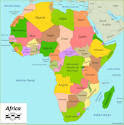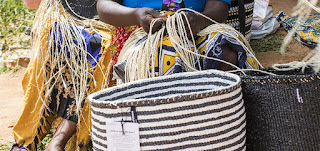7 Things You Need to Know About Beautiful Henna Decorations
 |
| Henna Decorations for the Hands |
Henna,
also known as Mehndi in Hindi, is a dye prepared from the henna tree. Henna
also refers to the art applied on the human skin and fabrics from the dyes.
Since time immemorial it has been applied on the skin and fabrics among
Indians, Arabs, Jews and Africans. Today we bring you seven facts about this
interesting form of decoration.
1. Preparation
Henna
is made from the henna leaves of the henna tree. In most cases, it is sold as a
powder, made from drying, milling and sifting the leaves which is then mixed
with liquids such as water or lemon juice. The paste is left for more than 48
hours before it is ready for use.
2. Application
Henna
can be applied with many traditional like a stick or twig or modern tools such
as a syringe or plastic cone. T prevent it from falling off the skin, the paste
is sealed down by dabbing a lemon or sugar mix over the dried paste. Henna
stains are orange when the paste is removed but darken over the next few days
to a deep reddish brown three days after application.
3. Used
by Men and Women.
Muslim
men use henna as a dye for hair and particularly their beards. This is
considered sunnah in the Islamic
religion while Muslim women use henna to dye their hands and nails to
demonstrate femininity.
4. Henna
is not tattoo
Henna
is not a form of tattoo and is not considered as a form of tattooing. Many
people, unknowingly, tend to confuse tattoos on the human body with henna.
5. Decorations
for Weddings
 |
| Decorations for the Breasts |
In
ancient times, the Night of Henna was celebrated among Muslims, Jews, Sikhs and
Hindus. Weddings and marriages were
celebrated by adorning the bride and the groom with henna. Brides usually had a
lot of henna and the most complex patterns. Today bridal henna nights are
popular in Egypt, Morocco, on the Indian subcontinent and in many Arab
countries.
6. Symbol
of Lasting romance
In
Bulgaria, the bride was decorated with a lot of henna. This blot symbolized the
drop of blood on the couples’ sheets after consummating the marriage and
breaking the hymen of the bride. The longer the henna lasted, the longer the
husband would love the wife. Swahili women at the coast apply henna on breasts
with decorations of hearts, flowers or cups which hook men to the drawings
during love making.
7. Source
of Magic
 |
| Henna Decorations for the Thighs |
In
Iran, henna is believed to be a magical and protective plant that when applied
to the body, protects one from the evil eyes, brings happiness, integrity and
guarantees one life after death. Henna is commonly used on long wedding rituals
where the bride and bridegroom are adorned during the wedding week.
In
East Africa, henna painting competitions have been held in Lamu, Malindi and
Zanzibar especially during major cultural festivals. Expert painters earn good
income from the lucrative art as not everybody is a qualified painter.






















